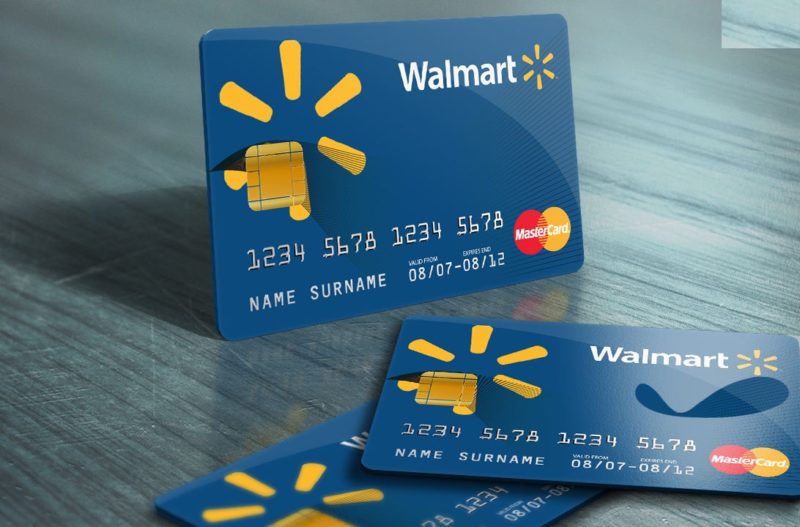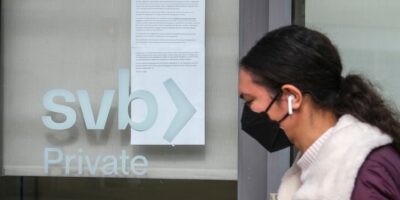Don’t Say Unbanked; Say Differently Banked
Walk into a Walmart these days and you can buy all sorts of financial services.
If you don’t have a bank account, you can cash a paycheck for $4 at a Walmart Money Center. Have the teller load the proceeds onto your Walmart MoneyCard, a prepaid debit card, and you can immediately spend the funds at any retailer, online or brick-and-mortar, that accepts Visa or MasterCard. Or you can configure your MoneyCard to pay your utility bills and rent. You can also use it to make instant person-to-person payments to other prepaid debit card owners.
Despite the range of banking functions facilitated by Walmart’s prepaid debit card, anyone who solely relies on it for all their payments needs is classified by the Federal Deposit Insurance Corporation (FDIC) as unbanked. In its 2017 National Survey of Unbanked and Underbanked Households, the FDIC estimates that 8 million American households (6.5 percent) did not have a bank account, or were unbanked.
America’s large population of unbanked is often presented as a failure of its banking system. If banks aren’t willing to serve the poor, say the critics, then public alternatives such as postal banks, universal accounts at the Federal Reserve (i.e., FedAccounts), or central bank digital currencies (CBDCs) may be necessary.
But if Walmart’s MoneyCard is any indication, many of America’s unbanked aren’t unbanked — they are differently banked. Instead of accessing banking services via traditional accounts, these people are connecting to it by prepaid credit cards, otherwise known as general purpose reloadable (GPR) prepaid cards. Walmart’s MoneyCard is one of the most well-known offerings. But even governments are sponsoring prepaid debit card programs, the Federal government’s DirectExpress card being the best example.
Postal banks, CBDCs, and FedAccounts are radical options for reaching the unbanked. Before we adopt them, let’s be sure that we have properly considered the solution that has already been presented in the form of prepaid debit cards.
For many people, getting a regular (i.e., non-prepaid) debit card is an uncomfortable process. An individual must first visit a bank branch and provide whatever personal information is needed to open an account. Many applicants have had problems with credit in the past, which means they may be denied. Banks often require people to deposit and maintain a minimum amount of funds. But many low-income Americans don’t have enough funds on hand to meet this requirement.
The FDIC’s 2017 survey polled the unbanked to find out why they don’t have an account. Almost 53 percent of them say that they “do not have enough money.” Over 30 percent of the unbanked don’t trust banks, and 28 percent say that avoiding banks gives them more privacy. Another 14 percent say that identification requirements or former bank account problems prevent them from opening an account.
GPR prepaid cards bypass the account-opening and maintenance process. To get one, an individual need only visit a pharmacy or grocery store and pay cash. Or they can apply for one on a government website. There are no minimum balances for a prepaid card. And only minimal amounts of information need be coughed up.
The prepaid card is in turn linked to a pooled amount of funds held at a bank. In Walmart’s case, the funds are held at Green Dot Bank, a regulated bank. The government’s DirectExpress balances are held at Comerica. Prepaid cardholders thus enjoy all the same payments functionality as a regular debit cardholder, without having to go through the fraught process of dealing with a bank.
Surprise overdraft fees, which run as high as $35, are another major reason that many Americans are turning to prepaid debit cards. According to the FDIC’s survey, 27 percent of prepaid card users don’t use bank accounts because of the unpredictability of fees, of which overdraft fees are a large component. GPR cards cannot go into overdraft, so users needn’t worry about being caught off guard.
Usage of GPR prepaid cards is most prevalent among unbanked households. The FDIC found that in 2017, 27 percent of unbanked households used one, but only 7 percent of banked ones did. Just over 10 percent of the unbanked reported using a prepaid card to save for unexpected expenses or emergencies compared to 0.1 percent of the fully banked (75 percent of whom rely on savings accounts).
The unbanked are far more likely to pay bills with a prepaid card (22 percent vs. 0.5 percent for the banked). And 23 percent of the unbanked receive income via direct deposit onto a prepaid card. Only 1.6 percent of the banked do so (92 percent of them receive income directly into a bank account).
What about fees? The Census Bureau sets a poverty threshold of $25,000 for a four-person household. Let’s imagine a family of four that earns $25,000/year and relies on a Walmart MoneyCard for all of its payments services. Walmart charges a monthly maintenance fee of $5. However, this fee will be waived if $1,000 is loaded onto the card each month. Assuming that the family deposits all its salary and benefits directly onto its Walmart Moneycard, it should easily qualify for this exemption.
A MoneyCard can be configured to accept deposits of salary and government benefits via electronic funds transfer. These deposits are free. Using direct deposit is a good idea because it avoids Walmart’s check-cashing fees of $4.
Even better, Walmart will credit income two to four days before payday or benefits day. The way this works is that many employers and benefit providers send payment instructions ahead of payday. The moment that Green Dot, Walmart’s partner bank, receives notification, it will lend (at no fee) the balance to the cardholder, even though the payment won’t settle for several days. Early payment is particularly important to people who live paycheck to paycheck.
Once loaded, the MoneyCard can then be used for all of the family’s monthly purchases at retail outlets that accept Visa or MasterCard. These purchases do not incur a fee. It can also be used at no expense to pay bills and make other recurring payments.
The family can also rely on their MoneyCard as a terminal for receiving payments from other individuals. A sender can buy a Green Dot MoneyPak card at a retailer (which incurs a $5.95 fee) and send the card’s number to the family, the money being instantly deposited once the number has been entered into MoneyPak’s website. Or the sender can transfer funds directly — and for free — from their own prepaid debit card to the family’s card, as long as both are issued by Green Dot Bank. The family can also make free payments to other individuals using this card-to-card route.
As for ATM fees, our family of four can withdraw cash from their MoneyCard at any Walmart store for free. Depositing cash, however, will cost $3 per transaction at Walmart.
So a Walmart MoneyCard seems to be a fairly cheap, fast, and transparent way for a family that makes $25,000 per year to get bank payment services. For families who make less than this and are dependent on federal benefit payments, the government’s Direct Express card, which I mentioned earlier, charges no maintenance fees whatsoever. Given the prices and transaction speeds I’ve just described, it’s not apparent to me that new systems like FedAccounts or CBDCs would offer the unbanked a genuine upgrade.
Prepaid debit card usage is growing rapidly. According to the Federal Reserve’s semiannual payment survey, prepaid cards accounted for 10.6 percent of all U.S. card transactions in 2017. This is up from just 6.6 percent in 2006. Whereas the number of non-prepaid card transactions has grown by 136 percent since 2006, prepaid card growth has grown by 297 percent over the same period!
This growth is a good sign. It shows that prepaid debit cards issued by retailers like Walmart, the federal government, and banks like Green Dot and Comerica are providing unbanked Americans with a different but fully functional and cost-effective connection to the national payments system.
There is probably more work to be done. For instance, it would be nice if different prepaid debit cards were interoperable, so that someone using a Green Dot card could send funds to someone using a Netspend card — or if prepaid cardholders could transfer funds directly to individuals with a bank account.
But these are incremental changes. The differently banked may not need exotic options like FedAccounts, postal banking, or CBDCs after all. A few improvements to what is already a fairly well-functioning system may suffice.











